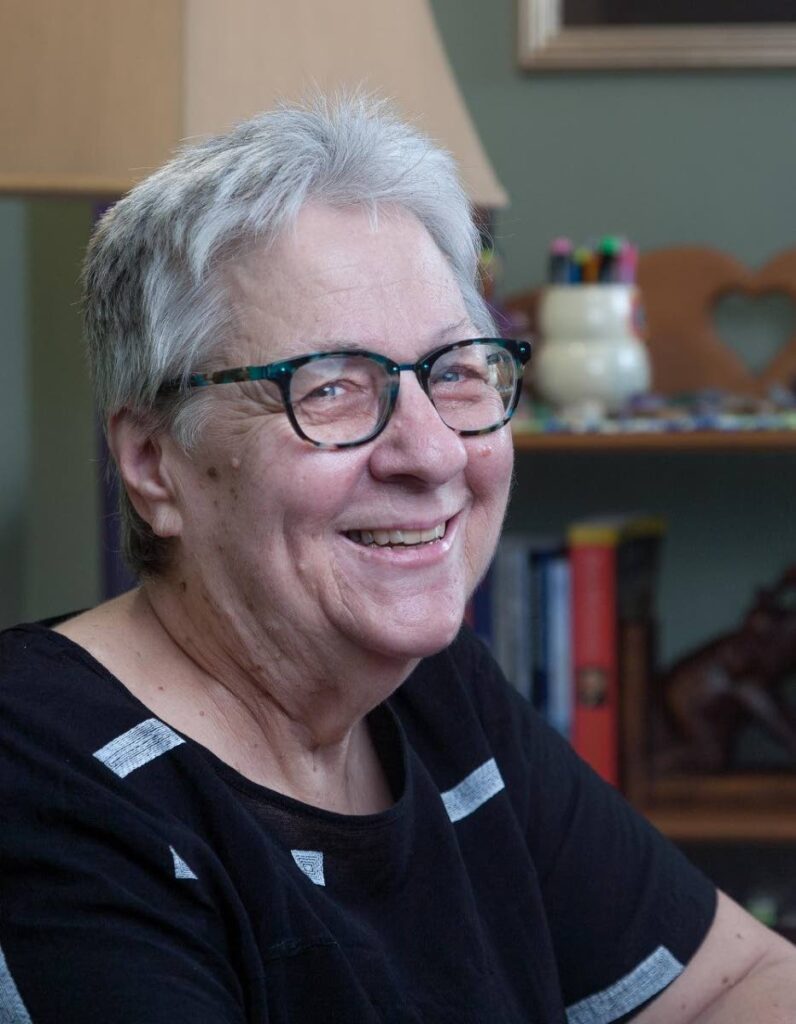Plummer, Rudder and legend of 1986

Debbie Jacob
ALL THE heartfelt condolences that poured in for Denyse Plummer when she died on August 27 don’t begin to tell the story of her role in calypso. The facts are straightforward. Crowned Calypso Queen ten times and national Calypso Monarch in 2001 with Heroes and Nah Leaving, Plummer experienced a rare calypso journey.
She was the consummate professional who recorded Carl “Beaver” Henderson’s musical arrangements before she stepped into the calypso arena in 1986, as Henderson pointed out on a Facebook post.
That year, while singing Len "Boogsie" Sharpe’s Panorama offering Pan Rising, Plummer faced the heckling, toilet-papering posse at Skinner Park for the Calypso Fiesta semi-finals. The pannist and singer had worked together at Chaconia Inn in Maraval. Boogsie stood by Plummer as controversy swirled.
The toilet-paper-wielding posse annually served as judge and jury for the national calypso semi-finals. They usually harassed singers they had metaphorically deemed as singing crap. This was not the case with Plummer so the embarrassing incident got chalked up to racism. Plummer looked white, although stories have always highlighted her mixed-race roots. Nevertheless, Plummer looked different and had a pop music voice – not a traditional calypso croon.
We do ourselves a disservice when we settle on an explanation of racism to make sense out of that day in Skinner Park. The situation was far more complex than racism. It represents a unique time and place. In 1986, Plummer and Rudder challenged calypso tradition and either intentionally or subliminally Plummer’s harassment stemmed from that challenge.
She had symbolically taken on the role of outsider from the moment she teamed up with Boogsie, always a crowd-pleasing favourite for his creativity, but notoriously overlooked by the Panorama judges. Boogsie wanted a Panorama title, but he held the role of rebel, writing original music and arrangements when most steelbands interpreted calypsoes. Now he pushed boundaries by putting Plummer centre stage.
In the cauldron of change churning that year, Plummer and Rudder emerged as transitional forces. Rudder took centre stage stepping out of his role as co-lead singer (along with Christopher Tambu Herbert) of the brass band Charlie’s Roots to perform The Hammer and Bahia Gyul (co-written by Pelham Goddard) in Spektakula calypso tent. Rudder’s bluesy soca/Baptist blend combined tradition but spun off on its own creative path.
Rudder crossed a boundary dividing soca-driven fetes and more laid-back calypso tents. He got some pushback too. Out of the blue came accusations that The Hammer had a musical motif from an old calypso.
I went to George Street to ask the ailing Neville Marcano (Growling Tiger), our first official national Calypso Monarch, about the song in question.
Surprisedly, Tiger felt excited about those accusations. He said the musical motif was from two generations ago, and he felt adamant that Rudder and Goddard could not have heard the calypso because it had never been recorded.
Tiger said this happened regularly in calypso and that he often identified musical motifs from bygone days in emerging calypsonians’ songs. Musical memory, he said, was passed down, and that is why calypso could never die. He described a flow between tradition and innovation with links like these forgotten memories. Tiger explained Guyanese magical realist writer Wilson Harris’s theory of fossil memories. He had never read Harris’s work.
The controversy over The Hammer fizzled; the controversy over Plummer swelled and the electricity that comes with transitions sparked. A growing number of calypso fans condemned the haters and hecklers and reasserted the nature of calypso, which always had a penchant for including the popular music of the day like blues, gospel – even Baptist rhythms.
Plummer faced her baptism by fire with chutzpah and grace, never complaining. She quietly stood her ground and became accepted as a trailblazer with that ever present Trini message that “all o’ we is one.”
In 1986, she also sang One Love. In 1987 she sang This Feeling Nice; in 1988 Woman is Boss. Through the years, her calypsoes told the story of a strong, passion-filled singer, who embraced her music and this country with confidence, commitment and integrity. Plummer weathered the journey from resistance to acceptance.
Plummer has a special place in calypso not because she was the victim of racism, but because she symbolised one of calypso’s musical transitions. It happened in the 50s when Sparrow came on the scene and in the 70s when Maestro, Shorty and Shadow shaped soca music. It happened in 1986, with Plummer and Rudder.
RIP Denyse Plummer, from a grateful nation that appreciates your part in leading us through an exhilarating musical transition.


Comments
"Plummer, Rudder and legend of 1986"